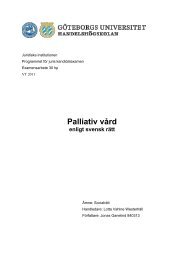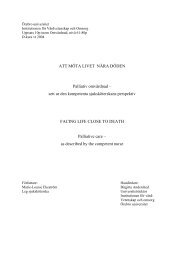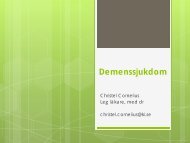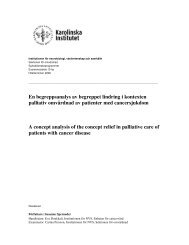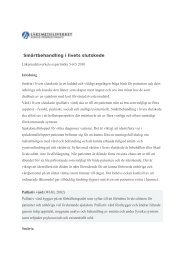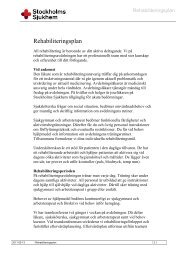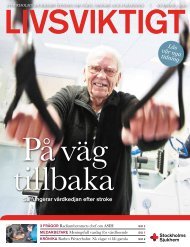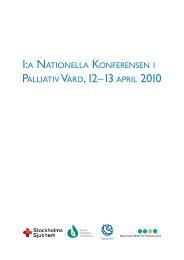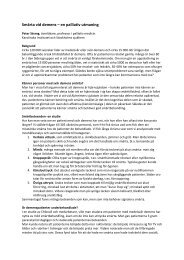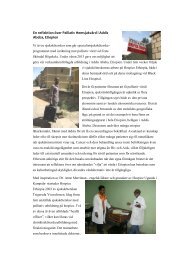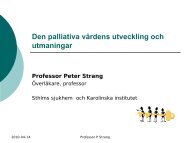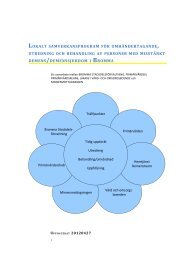Physiotherapy in palliative careâ - Stockholms sjukhem
Physiotherapy in palliative careâ - Stockholms sjukhem
Physiotherapy in palliative careâ - Stockholms sjukhem
You also want an ePaper? Increase the reach of your titles
YUMPU automatically turns print PDFs into web optimized ePapers that Google loves.
Pa<strong>in</strong> analysisBefore choos<strong>in</strong>g what k<strong>in</strong>d of pa<strong>in</strong> treatment to use a common judgment and exam<strong>in</strong>ation needsto be performed where locality and range as well as character and <strong>in</strong>tensity of the pa<strong>in</strong> isanalyzed.What causes relief and what makes the pa<strong>in</strong> worse?Does the pa<strong>in</strong> <strong>in</strong>hibit movement?Has sensibility been affected?How is every day affected?What type of pa<strong>in</strong> is it: nociceptive, neurogenic or visceral?Is pa<strong>in</strong> correlated to movement or is it pa<strong>in</strong>ful when rest<strong>in</strong>g?Different methods of pa<strong>in</strong> treatmentPhysical activity /mobiliz<strong>in</strong>gAssessment:It is important to observe the general condition of the patient.What physical activities do not worsen the pa<strong>in</strong>?What motivation for activity has the patient?Are there metastases <strong>in</strong> the skeleton with risk of fractures?How does the patient manage to move?Treatment:Common exercises for patients with pa<strong>in</strong> who are <strong>in</strong> a <strong>palliative</strong> phase of the disease aresupported movement exercises, with a glid<strong>in</strong>g mat, with a manual support or if possible <strong>in</strong> apool. Exercises to practice movement are also common <strong>in</strong> order to f<strong>in</strong>d less pa<strong>in</strong>ful and ifpossible pa<strong>in</strong>-free ways to move. The goal is to make the patient unafraid to move and therebyavoid problems connected with immobility. An active treatment is often comb<strong>in</strong>ed with othermore passive alternatives <strong>in</strong> the pa<strong>in</strong> treatment.To <strong>in</strong>crease e.g. strength, endurance, coord<strong>in</strong>ation and stability exercise can have positiveeffects with patients who have a long history of pa<strong>in</strong>. There is strong evidence for physicalexercise with different problems with pa<strong>in</strong> like e.g. lumbago, where activities have to be<strong>in</strong>dividualized. The studies are not made specifically on cancer patients (26, 27).<strong>Physiotherapy</strong> <strong>in</strong> <strong>palliative</strong> care – a cl<strong>in</strong>ical handbook Ulla Frymark, Lilian Hallgren, Ann‐Charlotte Reisberg 21



